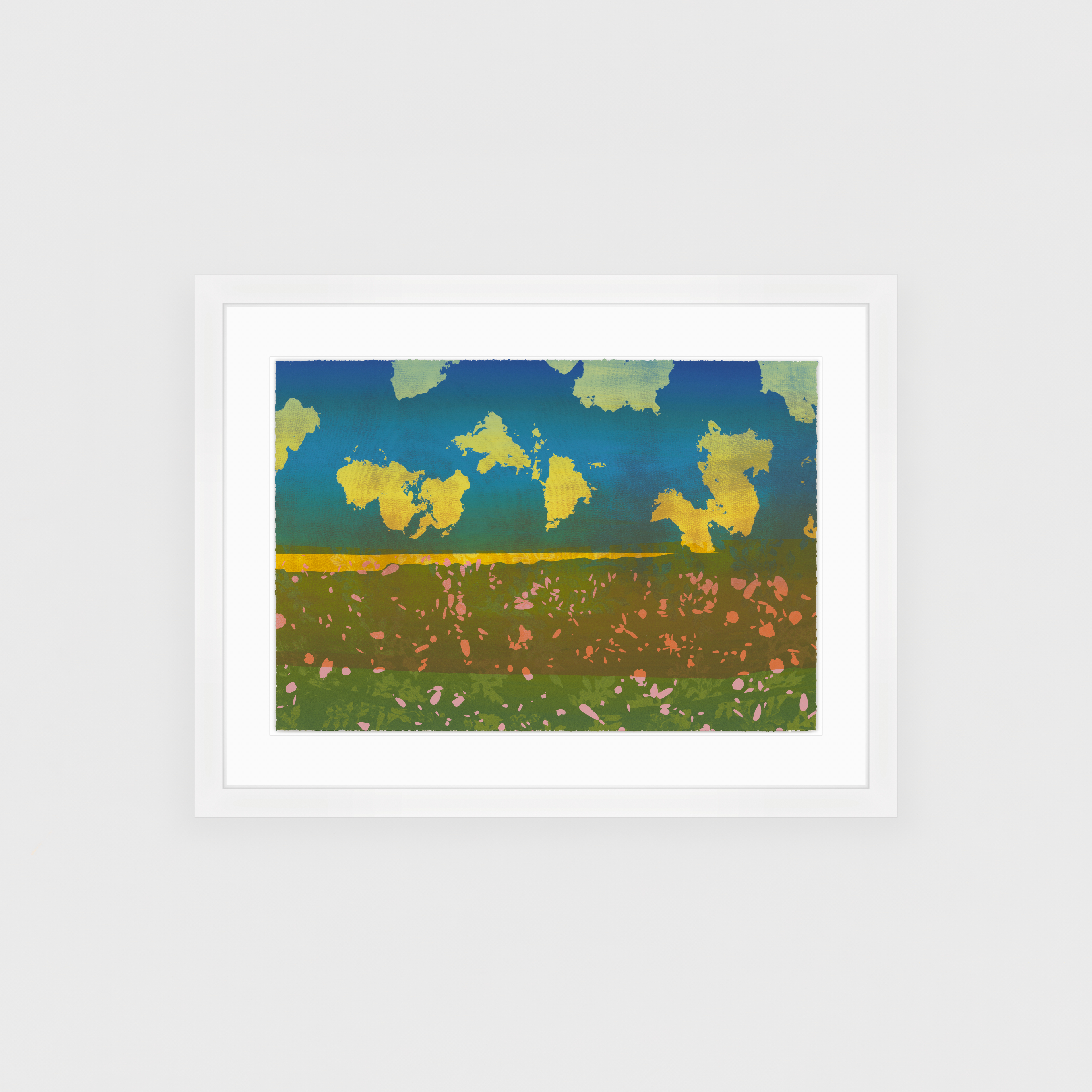If ever a contemporary artist suited the description Renaissance man it's surely Kevin Beasley. Born in 1985 in Lynchburg, Virginia, Beasley has established himself as a significant figure in contemporary American art through his innovative integration of sculpture, sound, and performance. Within those three practices, his work delves into the complexities of American history, identity, and the interplay between the physical and auditory realms.
His current exhibition, PROSCENIUM| Rebirth/Growth: The Watch / Harvest / Dormancy: On Reflection, at Storm King Art Center, in New York’s Hudson Valley, is a testament to his evolving practice and thematic concerns. Unveiled in May of this year, the installation is also his largest, and most ambitious, project yet.
Spanning 100 feet in width and 11 feet high, the work comprises four triptychs, each representing a season. These panels are constructed from layers of vintage clothing, ranging from denim and corduroy to promo T-shirts, encased in UV-resistant resin.
Embedded within these found items are natural elements such as sunflower seeds and dried flowers, as well as tools symbolizing agricultural labor.
The reverse of the panels features gestural marks made with resin and Sharpie pens, evoking the textures of the land. The installation's curved form draws inspiration from World War II era "concrete ears", acoustic structures designed to detect distant sounds, thereby integrating auditory elements into the visual experience.
As Beasley said, prior to the show's opening, "My hope is that you'll be able to stand in front of this and any sound that's coming from behind you, or around you, will be amplified just in that space".
Beasley's exploration of sound and materiality has been a consistent theme throughout his career. In his 2018 exhibition A View of a Landscape at the Whitney Museum of American Art, he centered the installation around a cotton gin motor from Alabama, using it to generate a soundscape that addressed the histories of slavery and industrialization.
The work was accompanied by performances and collaborations with musicians and poets, emphasizing the communal and performative aspects of his practice. An earlier work, I Want My Spot Back - pretty deafening by all accounts - involved manipulating acapellas from hip-hop artists such as Tupac Shakur and Notorious B.I.G., creating an immersive auditory experience that challenged perceptions of presence and absence.
KEVIN BEASLEY - Dormancy, 2025

Photography Garrett Carroll
But Beasley's use of sound is not merely an additive element but a core component that interacts with the physical materials, creating a dialogue between the auditory and the tactile.
To mark the new show, Artspace and Storm King Art Center are pleased to present Dormancy, Rebirth, Growth, and Harvest, a new set of four, limited-edition prints by Beasley.
The signed and numbered prints are available individually at $1,800, or as a suite of four at $6,000. Each individual print is in a limited edition of ten copies.
We spoke to Leslie Diuguid printmaker and founder of Du-Good Press about the process of making the edition.
Photography Garrett Carroll
"I like that Kevin is into altering and amplifying landscapes,” Leslie told us. “He made beautiful reference sketches for Proscenium that we incorporated into this series on top of color blocked material arrangements.”
“At the end of a very exciting visit to Kevin's studio, I asked him for a few samples of materials he typically uses - particularly ones that have interesting shapes. He gave me cotton, feathers, a curtain, bird feed, shoestrings, durags, kids clothes, and a shawl, all of which I indexed by directly exposing them with light on to screens capturing their silhouette.”
.jpg)
Photography Leslie Diuguid
“The density of each item necessitated varying exposure times: cotton and feathers, for example, required shorter exposures than a knit shirt or crinkled curtain. Kevin used the resulting black ink prints on transparent acetate to cut, rearrange, and create layouts. These layouts were converted into Photoshop for Kevin to assign each layer a color while drawing from his initial sketches. Adhering to his guidelines, I matched the photoshop colors in water-based ink and screen printed the editions onto 250gsm Stonehenge paper."

Photography Garrett Carroll
"Each print is beautifully complicated beneath the veiled surface, due to the interaction of transparent and opaque gradients and colorfields, leaving no blank white paper outside of the deckled edge.”

Photography Leslie Diuguid
“In an effort to maximize Growth, first Dormancy, then Rebirth were printed before a fresh start blue green went down in skips and stops revealing and intensifying the point of origin in this 20-color print."
"Additionally, gloss gives a slightly satin sheen pushing the drawing glow forward in Harvest and lifting cotton puffs in Dormancy. Handmade films, by way of printing each object onto acetate, were key to remixing between stages of refinement for this series. While computer assistance helped define color, this series is special in its lack of digital footprint."
Photography Garrett Carroll
We also asked co-curators of the Storm King show, Eric Booker and Nora Lawrence about Beasley's work at Storm King fed into the new edition.
“We were amazed by the process that Kevin developed to create this work,” they told us. “Despite its scale, Kevin made this work entirely by hand, developing a unique method that combines layers of resin, clothing, and other materials inside of a casting frame. The process is quick and intuitive but requires a great deal of preparation and skill. Each panel is made layer by layer, as the artist works from front to back to create the composition.”
The co-curators told us how Kevin conceptualized the work for Tippet’s Field, a new four-acre site developed as part of Storm King’s Capital Project.
“Kevin has engaged with the notion of landscape throughout his practice,” they said. “At Storm King, his materials and forms take on new resonance as they both frame and reflect the natural landscape. The sculpture’s curved form follows the arc of the field, while the negative space between each triptych incorporates the surrounding environment.”
.jpg)
Photography Artspace
“While this installation includes some of the artist’s belongings, the amount of material required to make it meant that he had to source objects from multiple locations. This process expands the artist’s vocabulary, reflecting the communal nature of the landscape it represents - this idea that landscape means different things to different people.”
.jpg)
Photography Artspace
Key to the Storm King project were the sounds generated by the sculptures themselves. The four triptychs represent the four seasons, with each title evoking the ways in which we relate and tend to the land through the cycles of agriculture.
“Neither Kevin nor we knew exactly what sound this work would make until it was installed in the space,” Booker and Lawrence told Artspace. “Kevin has studied the acoustic mirror form - listening devices that were developed before the advent of radar -which are designed to pick up and reflect sound, which is why the work takes on this parabolic satellite-like shape. Kevin’s work has the remarkable ability to focus and reflect the sound of viewers who stand in front of it, asking us to be in tune with our environment in a whole new way.”
You can buy the edition here and learn more about the show from which it evolved, here.

Photography Garrett Carroll

























